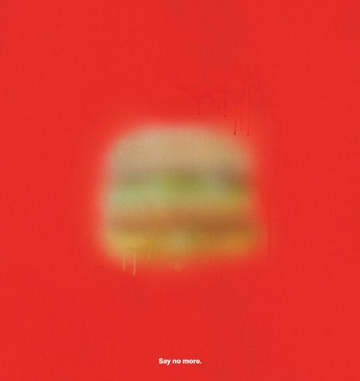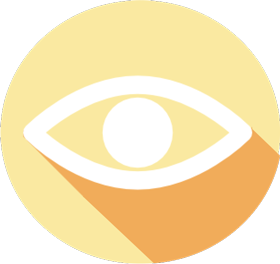How to use unsatisfied curiosity to boost sales of fatty foods and luxury items
Relevant topics Archive, Advertising
The use of curiosity in marketing is nothing new. Every day, our curiosity is activated by teasers, advertisements, blog titles, and e-mails in our inbox. They evoke a motivational state to obtain missing information. We feel an irresistible urge to gain the missing knowledge. And…before you know it, you fell for it! You have watched the full video or clicked on that email to read its content. Your curious itch is scratched.
But that’s the problem. In order for this type of marketing to work, the consumer has to take that extra step to actually satisfy that curiosity. Although we experience an urge to close the gap between what we know and want to know, nowadays we are bombarded with click-baits and teasers. And the more it’s used, the less we fall for it.
So that brings us to an interesting question. What happens if we leave one’s curiosity unsatisfied? There is one particular product category which really benefits from leaving your customers in the dark.
The sweet aftertaste of unsatisfied curiosity
Curious what category I’m referring at? Well, it’s the category of indulgent products. Temptations such as sweet and fatty foods, and luxury items. The latest research showed that when people’s curiosity was activated, but not satisfied, they made more indulgent choices. This is due to the fact that people feel an urge to obtain a reward when they are in a state of curiosity.
To illustrate, in one study all participants were shown multiple blurred images and had to guess what they thought the image portrayed. However, only one part of the group actually saw the corresponding unblurred images. And guess what happened afterwards? People who only saw the blurred image ended up consuming more chocolates.
Unsatisfied curiosity also led people to be willing to pay more for a luxurious holiday. And on top of that, it led people to choose an indulgent reward (a trial membership at a luxury gym) over a non-indulgent reward (a trial membership at a regular gym). Even though a 15-dollar cash back was offered if people in fact chose that regular gym!
Does curiosity make us throw in the towel?
Now you may think (or you may not, but the researchers did!), isn’t it simply that our cognitive abilities are depleted by curiosity? Because of the frustration that comes with not knowing? That we are simply not able to withstand temptations, because we don’t have the power to do so anymore? Well, the answer is no. Even when cognitive resources were restored, unsatisfied curiosity led to more indulgent consumption. Curiosity leaves us desiring.
Pumping up the… oxygen!
However, there can never be enough evidence! To check whether desire for rewards truly underlied the effect of curiosity on indulgence, the researchers dug even deeper… to the depth of our brain. They used fMRI to measure the blood oxygenation in the insula.
First of all, previous research implicated the insula in conscious desires. However, it is important to note that the function of the insula differs from other parts of the brain that are associated with rewarding stimuli. In a sense that the insula processes the desire for something rewarding instead of anticipating or receiving a reward. Secondly, greater blood oxygenation in the brain means greater activation in that particular part of the brain.
And guess what? The researchers were right! The people in the unsatisfied curiosity condition showed more activation in the insula.
Altogether, unsatisfied curiosity leads to a generalized desire for rewards, which in turn makes us indulge. But now perhaps the most important part, how can you apply this insight in sales and advertising?
Curious how to do it yourself?
In-store
So, are you ready for your own curiosity to finally be satisfied? Here are some tips to increase the sales of your luxurious body washes and holidays, your expensive shoes and kitchen appliances, your candies and burgers... the list goes on!
First of all, you could give your customer a small sealed envelope when entering your store or business premises. Accompanied with the instructions: ‘You may only open this envelope at check out’. This leads to unsatisfied curiosity among your customer during the entire time they are in your store. What you end up putting in the envelop is entirely up to you! However - in order to prevent people from opening the envelope earlier – it would be wise to put in a discount voucher for the current purchase that ranges from 10-dollar cents to for example 1 dollar. Which is only valid when the envelop is still sealed at the register. Not knowing what discount you receive, will keep the customer curious!
Secondly, you could also use the researcher’s method of course! Try using a blurred display behind an indulgent product. However, be aware! Make sure the image definitely is no longer recognizable. McDonalds – for example – started a campaign with blurred images of their iconic products (image 1). The goal of this campaign was to prove how recognizable their products were. So, using a blurred image of your perhaps popular product won’t do the trick. It may be best to use a photo which has nothing to do with the product you would like to sell. This is a great alternative, since the current research also showed that the source of the curiosity does not have to be related to the type of indulgence!

Image 1. Showing how not to do it in the context of this research
Thirdly, simply showing a fabric-covered product in the center of the store can pay off. Accompany this with the question: ‘Do you know what’s under the fabric?’. And curiosity will be activated. The customers will not receive an answer, which means their curiosity will not be satisfied! You can also think of flavor and scent to trigger curiosity.
Commercials
However, this scientific insight can of course also be used in commercials. To get your customers in the right mindset to buy your ice cream or candy bar. Think, for example, of telling a riddle. If you choose a riddle matching your storyline, it could easily blend into your commercial. But there is an even more subtle way. And it all takes place in the background. Seeing someone hiding something in the background or displaying a major safe may implicitly evoke curiosity!
There are numerous ways of inducing curiosity in your customer. Be creative and have fun with it! However, keep in mind that it only boosts the sales of indulgent products when the answer is left unrevealed. Keep the mystery alive!
Further Reading
-
What’s the perfect way to show a product in advertisements?
An advertisement has a lot of components you need to think about: size, placement, the tone of voice, the logo, the photo, the offer and much more. It’s mind-boggling. And yet, most advertisements are created on nothing more than a gut feeling, with no scientific background whatsoever. And alas, the effectiveness of an advertisement is mostly measured on their overall click through ratio (CTR). Thus, we don’t really know which components of the advertisement are working well, and which ones need improvement.


